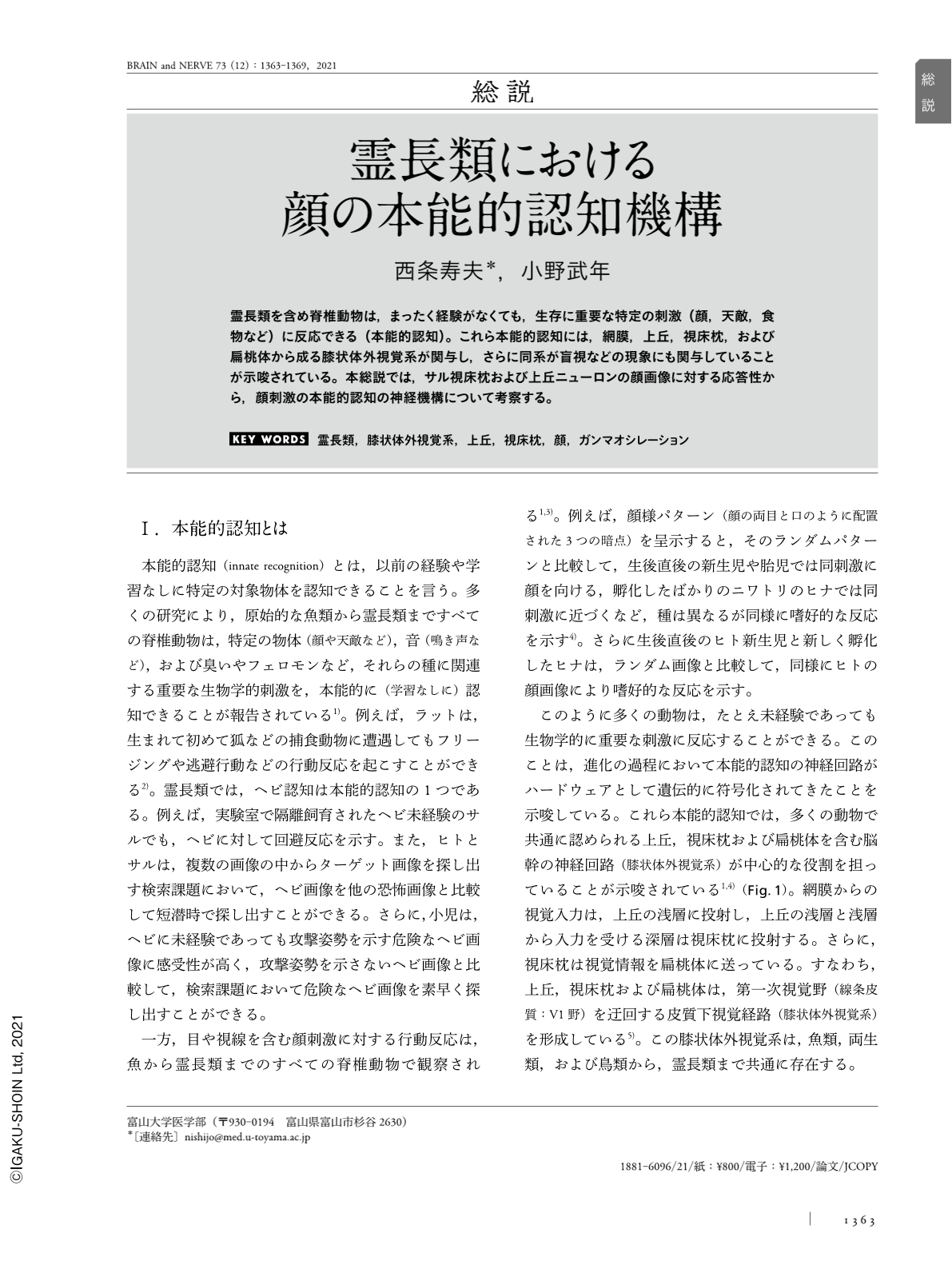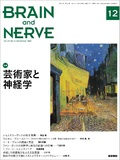Japanese
English
- 有料閲覧
- Abstract 文献概要
- 1ページ目 Look Inside
- 参考文献 Reference
霊長類を含め脊椎動物は,まったく経験がなくても,生存に重要な特定の刺激(顔,天敵,食物など)に反応できる(本能的認知)。これら本能的認知には,網膜,上丘,視床枕,および扁桃体から成る膝状体外視覚系が関与し,さらに同系が盲視などの現象にも関与していることが示唆されている。本総説では,サル視床枕および上丘ニューロンの顔画像に対する応答性から,顔刺激の本能的認知の神経機構について考察する。
Abstract
Primates can recognize or respond to specific stimuli that are important for survival, such as faces, predators, prey animals, and foods, even if they have not experienced those stimuli previously (innate recognition). Throughout vertebrates, including primates, the extrageniculate visual system (subcortical visual pathway) comprising the retina, superior colliculus, pulvinar, and amygdala is thought to be genetically hard-wired and involved in innate recognition of these stimuli. To investigate neural mechanisms of innate recognition in primates, we analyzed single neuronal responses to facial images in the monkey pulvinar and superior colliculus. The results indicated that the pulvinar and superior collicular neurons responded preferentially to facial images in short latency and showed gamma oscillations during stimulus presentation. Furthermore, the population activity of these neurons discriminated head direction, sex, and identity of facial images. Based on these findings, we discussed neural mechanisms underlying the innate and automatic (unconscious) detection of facial stimuli in the extrageniculate visual system.

Copyright © 2021, Igaku-Shoin Ltd. All rights reserved.


